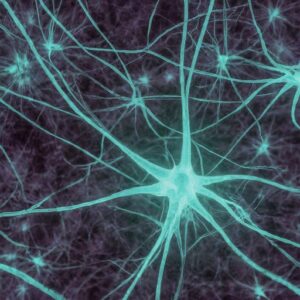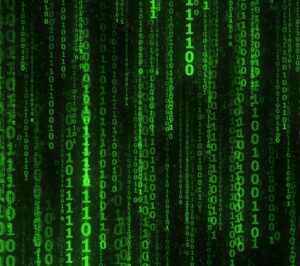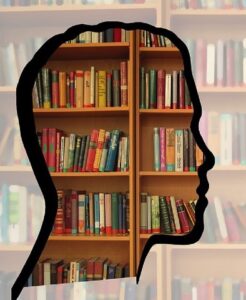- either the subject’s consciousness “woke up” (activated) the “sleeping agent” installed by someone earlier;
- or the operator, user or administrator of the being has changed.
consciousness
The contents of consciousnesses are …. records that are created on the basis of specific alphabets
1. Consciousness (created knowledge, conscious being) is a set of information systematized by the subject, which is thought over and interpreted by him as a result of the cognitive process, “colored” by his emotions, and refracted through his attitude to himself and to the objects of the Universe. In essence, it represents the whole volume of information created by the subject, i.e. his knowledge and life experience, which are formed by him during the life cycle of the creature’s flesh.
2. The content of consciousness represents the entirety of the subject’s realized being, i.e., all of his knowledge and life experience that:
- are created by the subject during the life cycle of his flesh;
- “colored” by his emotions and experiences;
- refracted through his relations to himself and to the objects of the Universe.
3. The contents of the consciousnesses of different subjects differ from each other:
- alphabets on the basis of which they are created;
- the volume of content;
- energy of both content elements and the general energy of consciousness as a whole.
4. The content of consciousnesses of automatic devices is an information object, which consists of a set of information systematized by the device. Automata are devices that perform any actions stipulated by their creators in advance. As an example – systematization of certain information as an exclusive type of activity: a temperature recorder at a weather station; Google search engine indexing system that collects information from the web and systematizes it; etc.
5. The content of consciousnesses of highly developed beings is energy-informational entities, because in the process of cognition they color all their thoughts with their emotions, which leads to the fact that any element of the content of consciousness is an information-energy formation: a set of information elements (information realized by the subject), each of which has an individual energy (subject’s emotion, subject’s thought energy, subject’s experience energy).
6. At the moment of creation or birth of a new flesh, the volume of consciousness of the object created on its basis is close to zero, but it is constantly increasing, reaching its maximum at the moment of death of the flesh.
7. The volume (magnitude) of consciousness is a parameter of consciousness that can be quantified.
8. The measurement of consciousnesses is nothing but the measurement of their content, i.e. the measurement of the content of consciousnesses. Accordingly, consciousnesses should be measured in the appropriate units of measurement of the content of consciousness, which is peculiar to the corresponding being or population of beings. Since beings can have anything as elements of their alphabets: pictorial signs, sounds, colors, smells, images, as well as any other objects that are available for their perception, the “volumes” of the content of corresponding consciousnesses should be measured in corresponding units of elements of their alphabets, which are peculiar to each kind of beings.
9. The term memory is used for the purposes of describing the process of a Being’s reference to its consciousness. Memory is a conventional name for the set of elements of consciousness that can be manifested by a subject when addressing its consciousness.
10. Each person is an individual possessing individuality, i.e. a unique Body and a unique Personality as one of the manifested aspects of the Soul. It is impossible to clearly identify a person based solely on the parameters of his/her body. People identify each other based on the totality of two interrelated components – the Body and the knowledge and life experience of a person, i.e., in essence, the content of his/her consciousness. When people claim to know the person, it means that, –
- They know what the person’s body looks like;
- They know what the consciousness, i.e., the knowledge and life experience of that person, which they associate with that particular body, “looks like.”
11. If the body or consciousness is altered for any reason, then the people around them may not recognize that person. This can happen if:
- The person’s body is changed. For example: plastic surgery has been done, serious facial injuries have occurred, a lot of time has passed and the person’s body has aged, etc.;
- A person’s consciousness has changed. For example: new knowledge, abilities, skills have appeared or disappeared (a person began to speak foreign languages unknown to him before; began to play well on musical instruments he had not played before, or, on the contrary, “forgot” much of what he knew and knew well before), a person has radically changed his attitude to something or someone, his character or temperament has radically changed.
It is in such cases that people say about such a person – “I do not recognize this person”.
Conclusions:
1. Every creature leaves its mark in the Universe and man is no exception. One part of man’s heritage, which has a material basis, goes to planet Earth (built houses, planted trees, educated children, written books, created devices, corpse of a dead body, etc.), and the other part of man’s heritage in the form of his consciousness goes to Nature. I.e. the consciousness of any being does not disappear with the death of the flesh (the end of the life cycle of the flesh), but continues to reside in the Universe as part of the Soul in the form of an energy-informational object.
2. The content of consciousness is a record based on a code consisting of a specific standardized set of objects (alphabets, words, sentences, etc.), which is created by a population of beings of the same species and is available for perception by these beings.
3. The content of consciousness can be created exclusively during the life cycle of flesh.
4. Alphabet – a standardized set of objects, which is created by a population of beings of one species and is available for perception by these beings, allowing them to create their own languages for communication on this basis:
- In human beings, the elements of alphabets are pictorial signs – letters, numbers, notes…;
- In other beings living on planet Earth, the elements of their alphabets are also sounds, colors, smells, and any other objects available to these Beings for perception. Recall how whales, dolphins, bats, dogs, wolves, etc. communicate… Right, with sounds and odors….
- Entities can have (hypothetically) anything as elements of their alphabets…
5. Word – the basic structural unit of the subject’s language, which serves for naming objects, processes or phenomena in the process of cognition of the Universe, is an arbitrary sequence consisting of the elements included in the alphabet.
6. Proposition– a word or an ordered compound of words organized by a subject.
7. Language – a system that allows correlating the subject’s concepts and properties of objects and processes cognized by him.
Consciousness is… an integral “part” of the Soul
“Das Bewusstsein kann nie etwas Andres sein als das bewusste Sein, und das Sein der Menschen ist ihr wirklicher Lebensprozeß.”
“Consciousness can never be anything other than conscious being, and the being of men is the real process of their life.”
K. Marx and F. Engels (Die deutsche Ideologie. Marx/Engels, Marx-Engels-Werke (MEW) 3, S. 26, 1846/1932)
1. The population of human beings of modern anatomy, i.e. neoanthropes (Dr.-Greek νέος – new and ἄνθρωπος – man), now inhabiting the planet Earth, are called humans. A single representative of human beings is called a human being. The totality of all people both previously deceased and currently living on planet Earth is called humanity. The representatives of mankind, in a broad sense, are all living people, as well as Nicolaus Copernicus, and Nikola Tesla, and many other people who lived and created on the planet Earth earlier.
2. Human being conditionally consists of two interconnected “parts” – a unique Body (a “part” of human flesh manifested by the subject) and a unique Personality (a “part” of human Soul manifested by the subject), as well as a multitude of other conditionally “visible” (perceptible) and conditionally “invisible” (not perceptible) Subject Beings and Entities, who chose for their bodies as a dwelling place the flesh of human being and incarnated in it with the purpose of realization of their own tasks and desires.
3. Human personalities cognize the Universe by the method of its manifestation. Manifestation is a cognitive process in which information about the states of any fragments of the Universe is cognized by the Personality in the form of sensations and then displayed by it in the form of objects, processes or phenomena, thus forming its subjective picture of the Universe (its virtual reality). In the process of cognition, implicit information about the Universe becomes explicit information (manifestation) for the Personality. This process is called manifestation, as it is very similar to the manifestation of an image on a photographic film or the manifestation of an image when printing photographs (it is well remembered by the representatives of the older generation). By making more and more efforts to manifest a fragment of the Universe, the Human Personality learns the essence of what it manifests in more and more detail.
4. All that is included in the “composition” of the “content” of the Universe and determines all its properties is the “material” content. Accordingly, all objects that the subject is capable of manifesting are initially material and represent exclusively different forms of matter. Accordingly, the use of the terms “material” and “immaterial” to describe objects is inappropriate because it introduces confusion into terminology. Despite this, modern researchers often use the term “material” to characterize objects whose localization in physical space is possible, and the term “immaterial” to characterize objects whose localization in physical space is impossible.
5. «In the universe there are only atoms and emptiness. Nature has not created anything white, black, bitter, sweet, loud or wet. There is only the subject’s personal opinion about the cognizable object, which is based solely on his sensations…» Democritus of Abdera (Δημόκριτος; c. 460 BC, Abdera – c. 370 BC) was an ancient Greek philosopher, one of the founders of materialist philosophy, who argued roughly as early as Democritus of Abdera (Δημόκριτος; c. 460 BC, Abdera – c. 370 BC).
6. Human personality forms its sensations by means of the flesh of the human being, and further interprets (interprets) them as white, red, bitter, sweet, loud, or wet….
7. Wishing to cognize something, the Human Personality preliminarily carries out the process of objectification, declaring some fragment of the Universe as a separate object. Successful realization of this process is possible only if a human being through his “cognition slit” manifests some flesh, which has for him a “visible” (perceptible) “interface” formed by the difference in the degree of matter density of the cognized fragment of the Universe in comparison with the density of matter of the environment surrounding it.
8. Environment is everything that “surrounds” a human being and has significance and meaning for him. It is a space that has, from the subject’s point of view, unique physical properties and is manifested by him in the form of an integral structure with a clearly manifested by him interface with other environments.
9. Every object in the Universe initially contains information about itself, i.e. everything on the basis of which a human being is able to characterize it. Absolutely all objects in the Universe, from “elementary particles” to the largest star clusters, from bacteria to human beings, from all kinds of radiations to the creations of human hands, are carriers of the most diverse information about their origin, activity, evolution, “life path”, current state, etc. in the most minute details. Information is a potential “source of information” and can tell a lot to anyone who is able to “manifest” and “read” this information. Information does not exist on its own; it does not exist outside of its carriers. By default, information is unknown and unknowable to a person, but it is a potential “source of information” for him. Information is material, as it is an integral part of objects as fragments of the Universe manifested by the subject.
10. The human personality characterizes (describes, outlines, qualifies, characterizes, characterizes, reveals characteristic features and peculiarities) objects on the basis of information manifested by it. Characterizing objects, a person reveals and describes characteristic features and peculiarities of cognizable objects. And characterization of something is given, as a rule, with application of any physical parameters used in scientific research at the current moment of time. Such physical parameters can be, for example, the size and shape of the surface, temperature, speed of movement, humidity, chemical composition and so on. Such psychological parameters, for example, may be temperament, character, behavioral pattern, personality type, personality traits, mental and psychological health of the individual, and so on.
Otherworldly view on “our” nature. Users
Let’s contemplate the thought experiment:
Three different families bought the same type of a TV. These identical TVs were sold in one and the same store and produced at the same enterprise… But the first family constantly watch the news broadcasts, the second family prefers various TV series, and the third one is a fond of sports programs. There is nothing to be surprised about. Why? Because in every family there is a primary User of the device purchased (a TV set in this case) and exactly this person determines its usage policy. As a rule, this TV was bought to satisfy the wishes of this particular User…
The same situation is with all other devices…
In fact, the term “device” always denotes some object (device, mechanism, construction, installation …) human beings have created for their own needs to perform strictly defined functions (personal computer, mobile phone, TV, radio, refrigerator, air conditioner, cookstove, car…)

For example, a personal computer (PC). Computers are called “personal” just because they are used by certain “persons”, i.e. “Users”. As a rule, each personal computer has one user. Each user is free to use his personal computer in his own discretion: to play computer games, to develop any innovative facilities, to constantly surf the social networks, etc.
What is an obvious conclusion we can arrive at after the results of this thought experiment?
The same situation is with people…
Despite the similar functionality of the human bodies as well as the possibility to duplicate (clone, copy) their genetically identical material bodies, they all have and will always possess different memory, different consciousness, different character, different knowledge, different experience… Why is it so? One of the possible variants is that various people just have various Users.
The material body just provides “own” User with the opportunity to cognize “our” World and perform certain actions in it. It is he (“our” User) who feels anxious, thinks, dwells on something, enjoys… And each reader can guess what is the name of “his” User — it’s your Personality.
There are good reasons why such terms as a person that denotes the integrity of a human being (from the Latin persona) and a personality denoting social and psychological aspects of a human being (from the Latin personalitas) have the same deep root persona.
Otherworldly view on “our” nature. The World of a Human being
Every Human being constantly processes information during his cognitive activity. Once this information is systematized (generalized), it acquires a new status — now it’s knowledge (“life experience”) of this particular Human being.
That’s why people reflect (“see”, feel) the outside World, and each of them does it in his/her own way (from his/her own “point of view”, “with his/her own eyes”).
Every person admits the existence of only those things he underwent by himself, then thought through, turned over in his mind, thought out, passed through, felt out, created, etc., that is, he cognized and realized something without any assistance.
If a human being did cognize and did realize “something”, then this “something” definitely exists for him!
If a human being didn’t cognize and didn’t realize “something”, then this “something” doesn’t exist for him at all!
All systematized and generalized feelings of a person are his consciousness (memory). There can be nothing more! This is the World of a human being he “lives” in.
P.S. If we imagine a meeting of two people, whose consciousnesses contain completely different information, they will not be able to communicate with each other, since they will have nothing to talk about, because these interlocutors live in “different Worlds” (they perceive the World “with different eyes”).





